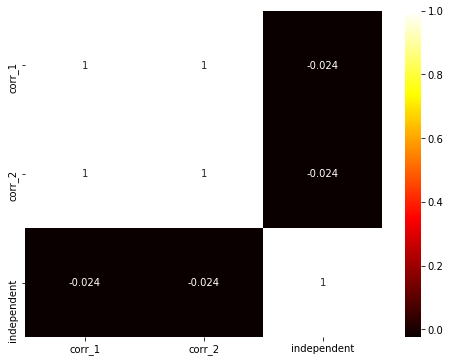Guru example¶
from modelgym import Guru
import numpy as np
Initialize Guru
guru = Guru()
Make toy dataset
n = 100
np.random.seed(0)
X = np.zeros((n, 6), dtype=object)
# make not numeric feature
X[:, 0] = 'not a number'
# make categorial feature
X[:, 1] = np.random.binomial(3, 0.6, size=n)
# make sparse feature
X[:, 2] = np.random.binomial(1, 0.05, size=n) * np.random.normal(size=n)
# make correlated features
X[:, 3] = np.random.normal(size=n)
X[:, 4] = X[:, 3] * 50 - 100
# make independent feature
X[:, 5] = np.random.normal(size=n)
# make disbalanced classes
y = np.random.binomial(3, 0.9, size=n)
Main features¶
Looking for categorical features
guru.check_categorial(X)
Some features are supposed to be categorial. Make sure that all categorial features are in cat_cols.
Following features are not numeric: [0]
Following features are not variable: [1]
defaultdict(list, {'not numeric': [0], 'not variable': [1]})
Looking for sparse features
guru.check_sparse(X)
Consider use hashing trick for your sparse features, if you haven't already. Following features are supposed to be sparse: [2]
[2]
Looking for correlated features
guru.check_correlation(X, [3, 4, 5])
There are several correlated features. Consider dimention reduction, for example you can use PCA. Following pairs of features are supposed to be correlated: [(3, 4)]
[(3, 4)]
Drawing correlation heatmap for features
guru.draw_correlation_heatmap(X, [3, 4, 5], figsize=(8, 6))
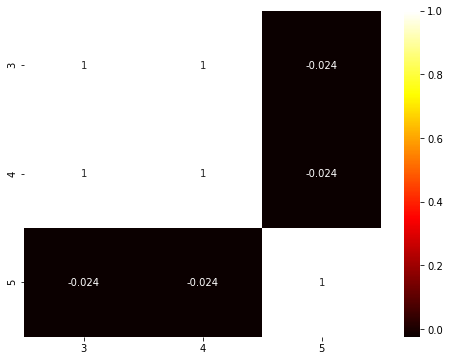
Drawing 2d histograms for features
guru.draw_2dhist(X, [3, 4, 5])
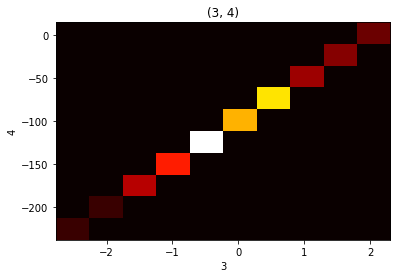
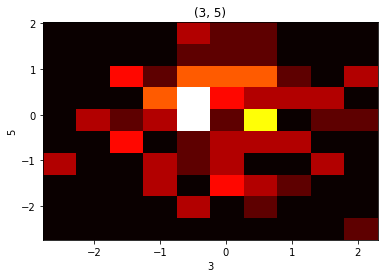
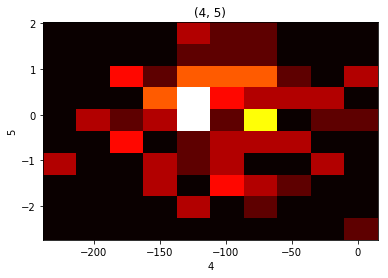
Looking for disbalanced classes
guru.check_class_disbalance(y)
There is class disbalance. Probably, you can solve it by data augmentation.
Following classes are too common: [3]
Following classes are too rare: [1, 0]
defaultdict(list, {'too common': [3], 'too rare': [1, 0]})
dtype with fields¶
You can also use array with dtype with fields
Let’s make another representation of the same data
named_X = np.zeros((n,), dtype=[('str', 'U25'),
('categorial', 'int'),
('sparse', float),
('corr_1', float),
('corr_2', float),
('independent', float)])
for i, name in enumerate(named_X.dtype.names):
named_X[name] = X[:, i]
Now we can draw heatmap like this
guru.draw_correlation_heatmap(named_X, ['corr_1', 'corr_2', 'independent'], figsize=(8, 6))
